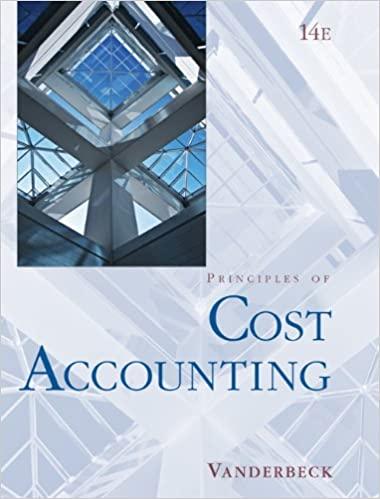Answered step by step
Verified Expert Solution
Question
1 Approved Answer
Explain what the company has included in its Cash and Cash Equivalents. 7. CASH, CASH EQUIVALENTS, AND SHORT-TERM INVESTMENTS Cash and cash equivalents consist of


Explain what the company has included in its Cash and Cash Equivalents.
7. CASH, CASH EQUIVALENTS, AND SHORT-TERM INVESTMENTS Cash and cash equivalents consist of the following: As at April 3, 2021 As at March 28 2020 (thousands of Canadian dollars) Cash Restricted cash Cash equivalents Cash and cash equivalents 84,516 391 28 84,935 48,955 1,212 70,306 120,473 Restricted cash represents cash pledged as collateral with its financial institution in support of the Company's credit card purchasing program, as well as certain deposits related to utilities contracts. As at April 3, 2021, the Company held no short-term investments (March 28, 2020 - no short-term investments). Short- term investments consist of guaranteed investment securities with an original maturity date greater than 90 days and remain- ing term to maturity of less than or equal to 365 days from the date of acquisition. These investments are non-redeemable until the maturity date, and therefore they are classified separately from cash and cash equivalents. 8. INVENTORIES The cost of inventories recognized as an expense during the 53-week period ended April 3, 2021 was $530,1 million (2020 $550.0 million), Inventories consist of the landed cost of goods sold and exclude inventory shrink and damage reserve and all vendor support programs. The amount of inventory write-downs as a result of net realizable value lower than cost during the 53-week period ended April 3, 2021 was $9.2 million (2020 - $10.2 million). The amount of inventory with net realizable value equal to cost was $5.4 million as at April 3, 2021 (March 28, 2020 - $4.4 million). 56 Consolidated Financial Statements and Notes 9. DERIVATIVE FINANCIAL INSTRUMENTS The Company uses derivative financial instruments, such as foreign exchange forward contracts, to manage the currency fluc- tuation risk associated with forecasted U.S. dollar payments, primarily for general merchandise inventory purchases. These contracts have been designated as cash flow hedges for accounting purposes. There is an economic relationship between the hedged items and the hedging instruments as the terms of the foreign exchange forward contracts match the terms of the expected highly probable forecast transactions (i.e. notional amount and expected payment date). Furthermore, the Company has established a hedge ratio of 1:1 for the hedging relationships as the underlying risk of the foreign exchange forward con- tracts is identical to the hedged risk components. The fair values of derivative financial instruments are determined based on observable market information as well as val- uations determined by external evaluators with experience in financial markets. During the fiscal year ended April 3, 2021, the Company entered into contracts with total notional amounts of C$69.7 mil- lion to purchase U.S. dollar/Canadian dollar currency pair forwards (2020-C$118.8 million). As at April 3, 2021, the Company had remaining contracts in place representing total notional amounts of CS34.6 million (March 28, 2020-C$66.2 million) at an average forward rate of 1.32 (2020 - 1.32). These contracts extend over a period not exceeding 12 months. The total fair value of the contracts as at April 3, 2021 resulted in the recognition of no derivative asset (March 28, 2020 $3.8 million) and a derivative liability of $1,6 million (March 28, 2020 - no derivative liability). During the quarter ended September 26, 2020, the Company terminated derivative instruments based on the heightened credit risk of one of its counterparties during the COVID-19 pandemic; consequently, hedge accounting was discontinued and a gain of s0,3 million as at that date was deferred in other comprehensive income. This gain has since been recognized in earnings and loss in the 53-week period ended April 3, 2021, concurrently with the related hedged transactions. There were no other forecast transactions for which hedge accounting had been used, but which were no longer expected to occur, or hedging relationships discontinued and restarted during the 53-week period ended April 3, 2021 and 52-week period ended March 28, 2020. During the fiscal year ended April 3, 2021, the Company had net losses of $4.5 million (net of taxes of $1,0 million) from the change in fair value of outstanding cash flow hedges (2020-net gains of $2.5 million, net of taxes of s0.9 million). During the same period, the Company reclassified net losses from settled contracts out of other comprehensive income to inventory and expenses of $0.1 million (net of Million, net of taxes of s0.2 million). This resulted in an other comprehensive loss of $4.4 million for the 53-week period ended April 3. 2021 2020 - other com 1:50 ..1Step by Step Solution
There are 3 Steps involved in it
Step: 1

Get Instant Access to Expert-Tailored Solutions
See step-by-step solutions with expert insights and AI powered tools for academic success
Step: 2

Step: 3

Ace Your Homework with AI
Get the answers you need in no time with our AI-driven, step-by-step assistance
Get Started


